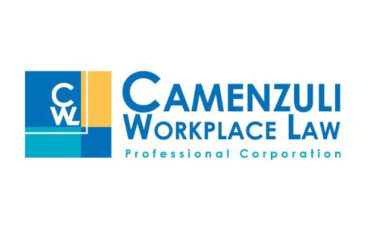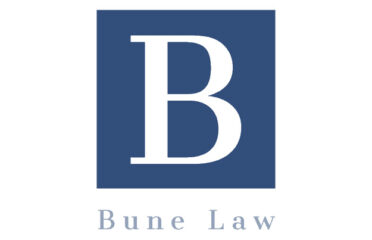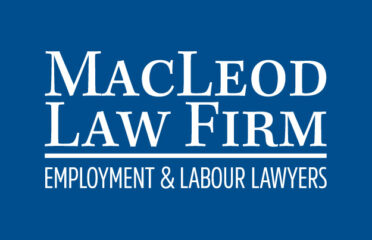What is Labour Law in Canada?
Labour law in Canada governs the relationship between employers, employees, and unions, establishing rights, responsibilities, and workplace standards. As a mix of federal and provincial regulations, Canadian labour law addresses everything from minimum wage to workplace safety and collective bargaining. This guide explores the foundations of labour law, key protections for workers, employer obligations, dispute resolution, and emerging trends in Canadian workplaces.
1. What is Labour Law in Canada?
Labour law (or employment law) regulates:
-
Individual employment relationships (e.g., contracts, wages, termination)
-
Collective labour relations (unionized workplaces)
-
Workplace health and safety
-
Human rights in employment
Canada’s system is decentralized:
-
Federal jurisdiction: 10% of workers (e.g., banks, airlines, federal public service).
-
Provincial/territorial jurisdiction: 90% of workers (most private sector jobs).
2. Key Areas of Canadian Labour Law
A. Employment Standards
Each province and the federal government set minimum employment rights:
-
Minimum wage (varies by province, e.g., $16.55/hour in Ontario as of 2024)
-
Hours of work/overtime (typically 1.5x pay after 44 hours/week)
-
Vacation entitlements (usually 2–4 weeks/year)
-
Termination notice/pay (based on tenure, e.g., 1 week per year in Ontario)
-
Leaves of absence (e.g., maternity/parental, sick, bereavement)
Recent Change: Federally regulated workers now have 10 days of paid sick leave annually.
B. Human Rights in the Workplace
The Canadian Human Rights Act and provincial laws prohibit discrimination based on:
-
Race, gender, religion, disability
-
Sexual orientation, gender identity
-
Age, marital/family status
Duty to accommodate: Employers must adjust workplaces for needs (e.g., disabilities) unless it causes “undue hardship.”
Case Example: British Columbia (Public Service Employee Relations Commission) v. BCGSEU (1999) – “Meiorin Test” established for accommodation standards.
C. Health and Safety
-
Right to refuse unsafe work without reprisal.
-
Workplace committees required in larger organizations.
-
Workers’ compensation: No-fault insurance for job-related injuries (e.g., WSIB in Ontario).
D. Unionized Workplaces
-
Union certification: Process for employees to unionize (rules vary by province).
-
Collective bargaining: Negotiations between unions and employers.
-
Right to strike/lockout (after bargaining impasse).
Controversy: Alberta’s 2020 Bill 32 restricted union fundraising for political activities.
3. Employment Contracts & Termination
A. Contract Types
-
Indefinite-term: Ongoing employment (most common).
-
Fixed-term: Ends on a specific date (early termination may require full contract pay).
-
Independent contractors: Not employees (no statutory benefits).
Misclassification Risk: Courts may deem contractors as employees if they lack autonomy (e.g., Uber drivers lawsuits).
B. Termination Rules
-
With cause: Immediate dismissal for serious misconduct (e.g., theft).
-
Without cause: Requires notice/pay (or “working notice”).
-
Common law notice: Often exceeds statutory minimums (court-determined).
-
Example: A 10-year executive might get 12–24 months’ pay.
-
Case Example: Waksdale v. Swegon North America (2020) – Ontario Court voided termination clauses that violated the Employment Standards Act.
4. Dispute Resolution
A. Individual Complaints
-
Employment standards claims: Filed with provincial ministries (e.g., Ontario’s Ministry of Labour).
-
Human rights complaints: Handled by tribunals (e.g., Canadian Human Rights Commission).
-
Wrongful dismissal lawsuits: Civil claims for inadequate termination pay.
B. Unionized Workplaces
-
Grievance arbitration: Resolves disputes under collective agreements.
-
Labour boards: Oversee certification and unfair labour practices.
5. Emerging Trends & Issues
A. Remote Work Policies
-
Legal gray areas: Overtime tracking, workspace safety at home.
-
Ontario’s “right to disconnect” (2022): Employers with 25+ staff must have off-hours communication policies.
B. Gig Economy Challenges
-
Court rulings increasingly classify gig workers as employees (e.g., Foodora couriers in Ontario).
-
Proposed federal “digital platform workers’ rights” (2024).
C. Pay Transparency
-
BC, Ontario, and PEI require salary ranges in job postings.
-
Federal contractors must report wage gaps.
D. AI in Hiring
-
Bias risks: Algorithms discriminating against protected groups.
-
Ontario’s proposed AI regulation for employment screening.
6. How Workers Can Protect Their Rights
-
Review contracts carefully before signing (watch for overly broad termination clauses).
-
Document workplace issues (e.g., harassment, unpaid overtime).
-
File complaints promptly (strict deadlines apply, e.g., 2 years for human rights claims).
-
Unionize where feasible to leverage collective bargaining.
Free Resources:
-
Provincial legal aid clinics.
-
Workers’ Action Centres (e.g., Ontario’s Workers’ Rights Hub).
7. Employer Best Practices
-
Update policies to reflect current laws (e.g., remote work, AI use).
-
Train managers on human rights/accommodation duties.
-
Audit pay equity to avoid discrimination claims.
Penalties: Fines for violations can reach $250K+ for corporations.
8. Case Study: Wilson v. Atomic Energy of Canada Ltd. (2016)
-
Issue: Can federally regulated employees sue for unjust dismissal?
-
Ruling: SCC allowed lawsuits even if labour arbitration exists.
Conclusion
Canadian labour law balances employer flexibility with worker protections, adapting to new work models like remote and gig employment. By understanding their rights and obligations, both employees and employers can foster fair, productive workplaces.
For complex issues (e.g., mass layoffs, union drives), consulting a labour lawyer or HR professional is critical. As workplaces evolve, staying informed ensures compliance and equitable treatment for all.
Key Takeaways
-
Provincial laws govern most employment standards.
-
Termination pay often exceeds statutory minimums under common law.
-
Accommodation duties protect workers with disabilities/family needs.
-
Gig workers are gaining employee-like protections.
-
AI and pay transparency are reshaping hiring practices.
With proactive navigation of these laws, Canadians can build workplaces that are both competitive and just.
Canada made history on October 17, 2018, by becoming the first G7 nation and only the second country worldwide (after Uruguay) to legalize recreational cannabis nationwide under the Cannabis Act. This landmark legislation created a strictly regulated framework for cannabis production, distribution, sale, and consumption while maintaining public health and safety as top priorities.
This comprehensive guide explains everything Canadians need to know about current cannabis laws, including:
-
Legal possession limits and age restrictions
-
Provincial differences in retail models
-
Rules for home cultivation and public consumption
-
Workplace and impaired driving regulations
-
Recent legal developments and future trends
1. The Legal Framework: Cannabis Act and Regulations
Key Components of Canada’s Cannabis Legislation
-
Federal Law (Cannabis Act): Controls production, licensing, and criminal offenses
-
Provincial/Territorial Regulations: Govern retail sales, distribution, and local restrictions
-
Municipal Bylaws: Address zoning, public consumption, and business licensing
Legal Cannabis Products in Canada
| Product Type | Legal Status | Notes |
|---|---|---|
| Dried flower | Legal | Maximum 30% THC |
| Cannabis oil | Legal | |
| Edibles | Legal (since 2019) | Max 10mg THC per package |
| Concentrates | Legal | Max 1000mg THC per package |
| Topicals | Legal | Non-intoxicating |
2. What’s Legal vs. Illegal Under Canadian Law
Legal Activities (For Adults 18/19+)
✔ Purchasing from licensed retailers
✔ Possessing up to 30 grams of dried equivalent in public
✔ Growing up to 4 plants per household (except Manitoba/Saskatchewan)
✔ Sharing up to 30 grams with other adults (no payment)
Remaining Prohibitions
❌ Selling without a license
❌ Possessing over legal limits
❌ Driving while impaired (per se limit of 2ng/mL THC in blood)
❌ Taking cannabis across international borders
3. Provincial Differences in Cannabis Laws
Retail Models Across Canada
| Province | Retail System | Legal Age | Home Grow |
|---|---|---|---|
| Ontario | Private stores + online (OCS) | 19 | Yes (4 plants) |
| Quebec | Government stores (SQDC) | 21 | No |
| Alberta | Private stores + online (AGLC) | 18 | Yes |
| BC | Public/private mix | 19 | Yes |
| Manitoba | Private stores | 19 | No |
Note: Nunavut and NWT have government-run systems
Notable Provincial Variations
-
Quebec: Highest legal age (21), no home cultivation
-
Manitoba/Saskatchewan: Ban on home growing despite federal allowance
-
PEI: Only government-operated stores
4. Workplace and Employment Laws
Key Considerations for Employees
-
Employers can maintain zero-tolerance policies for safety-sensitive positions
-
Accommodations may be required for medical cannabis users
-
Random testing permitted in certain industries (transportation, construction)
Workplace Safety Guidelines
-
Follow Canadian Human Rights Act and provincial occupational health laws
-
Document impairment concerns objectively (not based on cannabis use alone)
-
Develop clear substance use policies
5. Impaired Driving Laws and Penalties
Cannabis and Driving Offenses
-
Criminal Code establishes three main offenses:
-
Per se limit: 2-5ng/mL THC (fines)
-
Hybrid limit: 5ng+ THC OR combined with alcohol (criminal charges)
-
Impaired by drugs (officer’s assessment)
-
Penalties for Cannabis DUI
| Offense | First Conviction | Subsequent Offenses |
|---|---|---|
| 2-5ng THC | $1,000 fine | 30 days jail |
| 5ng+ THC | Mandatory minimum $1,000 fine | 120 days jail |
| Combined (THC+alcohol) | $1,000 fine | 120 days jail |
License suspensions and mandatory education programs also apply
6. Medical Cannabis Regulations
Accessing Medical Marijuana
-
Requires authorization from healthcare provider
-
Can possess higher amounts than recreational limits
-
May grow more than 4 plants with Health Canada approval
-
Tax-deductible as medical expense
Key Differences from Recreational Use
| Aspect | Medical | Recreational |
|---|---|---|
| Age limit | None (minors with guardian) | 18/19+ |
| Possession | 30-day supply (as prescribed) | 30g public limit |
| Purchasing | Licensed producers only | Retail stores |
7. Recent Legal Developments (2023-2024)
Cannabis 2.0: New Product Regulations
-
Legalization of edibles, extracts, and topicals (2019)
-
Recent approval of cannabis beverages with strict labeling
Pending Changes
-
Potential increase to personal cultivation limits
-
Review of THC potency caps
-
Possible cannabis pardons for pre-legalization convictions
8. Common Legal Issues and How to Avoid Them
Top Cannabis-Related Charges
-
Illegal distribution (selling without license)
-
Over-possession (more than 30g in public)
-
Impaired driving
-
Youth access violations
Protecting Your Rights
-
Always purchase from licensed retailers
-
Keep receipts for cannabis products
-
Never transport cannabis across borders
-
Understand your provincial public consumption rules
9. Future of Cannabis Law in Canada
Emerging Trends
-
Cannabis tourism opportunities
-
First Nations jurisdiction over cannabis regulation
-
Psychedelics decriminalization movement
-
International trade potential if U.S. legalizes
Ongoing Challenges
-
Combatting the illegal market
-
Standardizing impairment testing
-
Addressing health concerns about high-potency products
Conclusion: Navigating Canada’s Cannabis Laws Responsibly
While cannabis is legal nationwide, Canadians must remain aware of complex and evolving regulations. By understanding federal/provincial rules, workplace policies, and driving laws, users can enjoy cannabis while staying compliant.






















